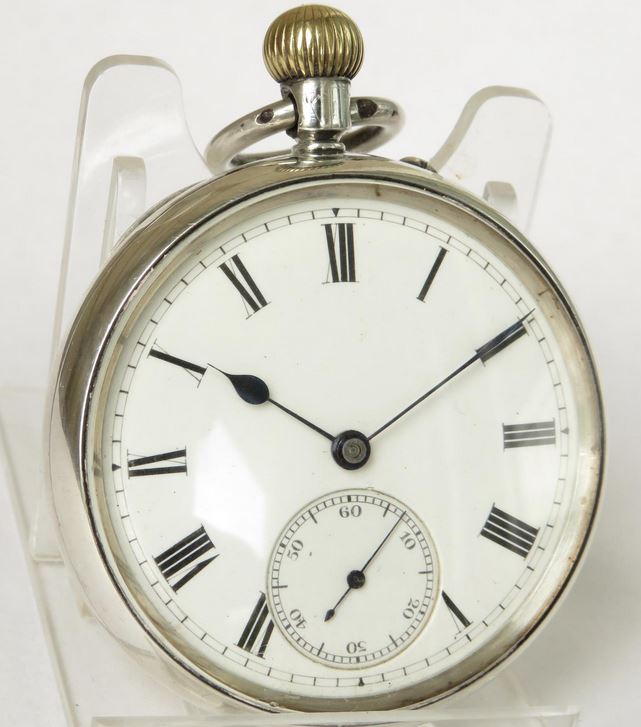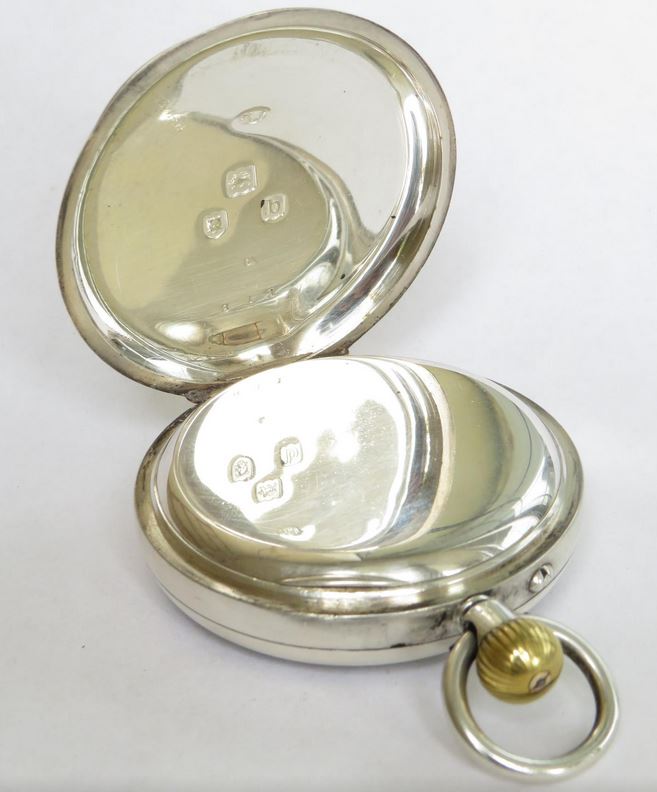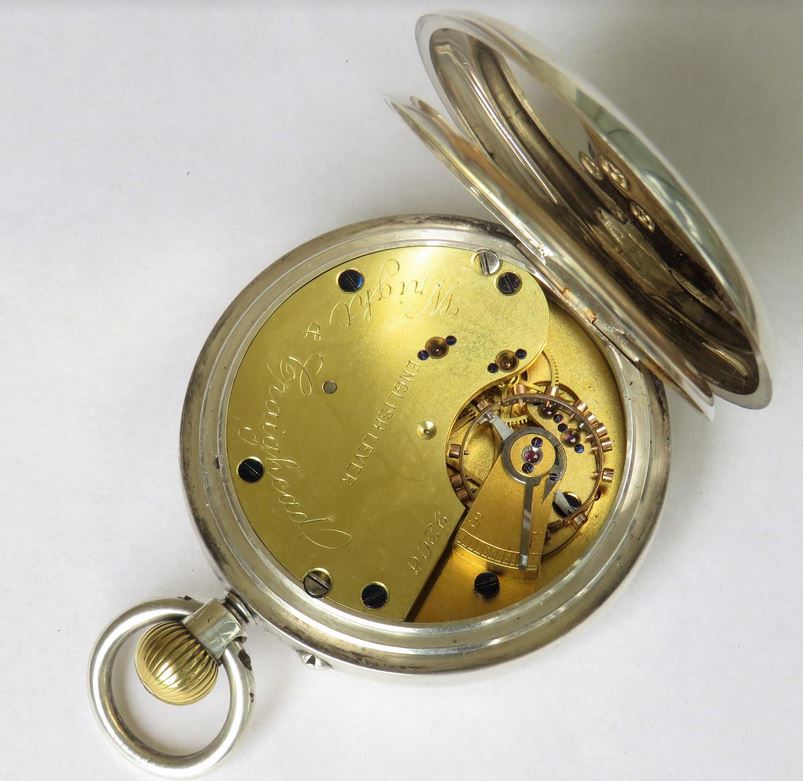Last updated on July 13, 2024
I have a passion for antique watches, they are practical, stylish and have historical charm. My collection consists of antique Swiss and English pocket watches and trench watches. All of the watches that have passed through my collection have been presentable and practical timepieces. As well as wearing the watches, I also enjoy researching them and this post is about one watch that I have under consideration at the moment. The only downside of researching the watches prior to purchase is it can take some time and occasionally the watch will be sold before I complete my work. One such example is this English Lever pocket watch by Wright & Craighead, 1897.

English lever escapement
The watch has a fully signed English Lever stem-winding movement which is working nicely. The English lever escapement was invented by British clockmaker Thomas Mudge around 1755. British watchmakers used the English lever, in which the lever was at right angles to the balance wheel. Later Swiss manufacturers used the inline lever, in which the lever was at 90 degrees between the balance wheel and the escape wheel. The Swiss lever escapement is used in nearly all modern mechanical watches.
The shortcoming of the English escapement, was that its escape wheel had pointed teeth, the tips of which would push against the pallet stones of the anchor, making both prone to wear. In contrast, the Swiss escapement had flat or clubbed teeth. This was better able to absorb the impulse of the escape wheel with the flat surface of the club teeth. As a result, reducing wear. In addition, the Swiss lever had adjustable pallet stones for stabilising accuracy. Because of these advantages, the flat tooth superseded the pointed tooth as the preferred shape.

Wright & Craighead
The movement is signed, Wright & Craighead. Thomas Daniel Wright and William Craighead were both well-respected watchmakers in their own rights. Wright won several awards for his watchmaking and also lectured on Watch Making Theory at the British Horological Institute. He was also a highly regarded technical instructor at the BHI. Wright held a number of positions at BHI, including that of Vice President. He is one of the very small group of recipients of the BHI Gold Medal.
Originally, Thomas worked as the general manager of Edward Charles Bracebridge & Co, who were watchmakers based at 8 Red Lion Street, Holborn in London. They had additional premises at 119 New Bond Street. According to various trade directories, the business was active from around 1851. In 1891, the owner of the business, James Bracebridge, found himself with deteriorating health and decided to retire. He sold the business to the partnership of Wright & Craighead. They continued the business out of the Red Lion Street address.
Watchmakers
Wright & Craighead fit into the watch-finishing category of watchmakers. They didn’t actually make any of the movement components. Instead, they purchased the components from watch manufacturers, such as Rotherham & Sons. This was typical of English watchmaking during the eighteenth and nineteenth centuries. The movements were supplied as a collection of raw components that had been roughly machined. These rough movements were called “frames”. A “frame” consisted of the top and bottom plates, the mainspring barrel and the gear train wheels. The frame did not include the escapement, balance, hairspring or jewels. It was the job of Wright & Craighead to assemble these components and finish the watch.
Case
The watch measures 48mm in diameter excluding the winding stem and the loop. The case is silver and both of the case backs are hallmarked for London 1897. There is a case maker’s mark for Joseph Walton of 7 Upper Charles Street in London. Joseph Walton was born in Meriden, in the West Midlands. However, following the death of his father, he was raised in London by his uncle James Thickbroom, a watch case maker. In 1867, on the death of his uncle, Joseph inherited the business. The Walton family continued running the business until the 1940s.

The case is in beautiful condition. There are no dents and only very minor blemishing, which is perfectly acceptable for a watch of this age. The watch crystal is in nice condition with no obvious scratches visible to the naked eye. The white enamel, black roman numeral dial is generally in great condition with crisp detailing and the original, pin-set, blue-steeled hands.
Bluing steel is a process that tempers the steel and creates an oxidised coating that helps to prevent the hands from rusting. First, the steel hands are cleaned and polished. Next, the hands are heated, over a bed of brass filings, to a precise temperature. The layer of brass filings is used to maintain a constant temperature exchange. The steel changes colour from gold to brown and then purple before it settles to blue. The dial has been left blank for a retailer to add their details if desired.
Movement
The watch has a gilt three-quarter plate keyless movement with a going barrel. It also has a plain balance cock with a polished steel regulator. In addition, it has escape and lever pivots with end-stones and screwed-in jewelling. The movement is protected by an inner hinged dust cover. The watch is running with an acceptable level of accuracy, within 2 – 3 minutes per day. This is quite acceptable for an antique watch.

Under consideration
As I stated at the beginning this antique watch is under consideration. The watch is presentable and reliable which makes it perfect for my collection. I am just in the process of researching another antique pocket watch, once complete I will make a decision between the two. If I am lucky, both will still be available for sale and I can buy my preferred choice. If I had endless resources, I would purchase both now.
The other watch I was considering at the time was this Coventry Astral pocket watch by H. Williamson Ltd, which is now part of my collection.

Thanks for the detailed information on Wright & Craighead. My family has a very similar watch that has been handed down through the generations, it has Wright & Craighead engraved on the movement and dates to 1895.